MuMuPlayer Pro supports simultaneous operation of multiple devices, enabling you to run several games/apps at once!
For multi-instance needs, we offer the following functionalities.
1. Create and Run a Device
On the main interface's top-right corner, click "+" to create a tablet device or a phone device.

Once created, the device appears in the list. There are three methods to start the device: Double-click the list / click the run thumbnail / click the launch button.
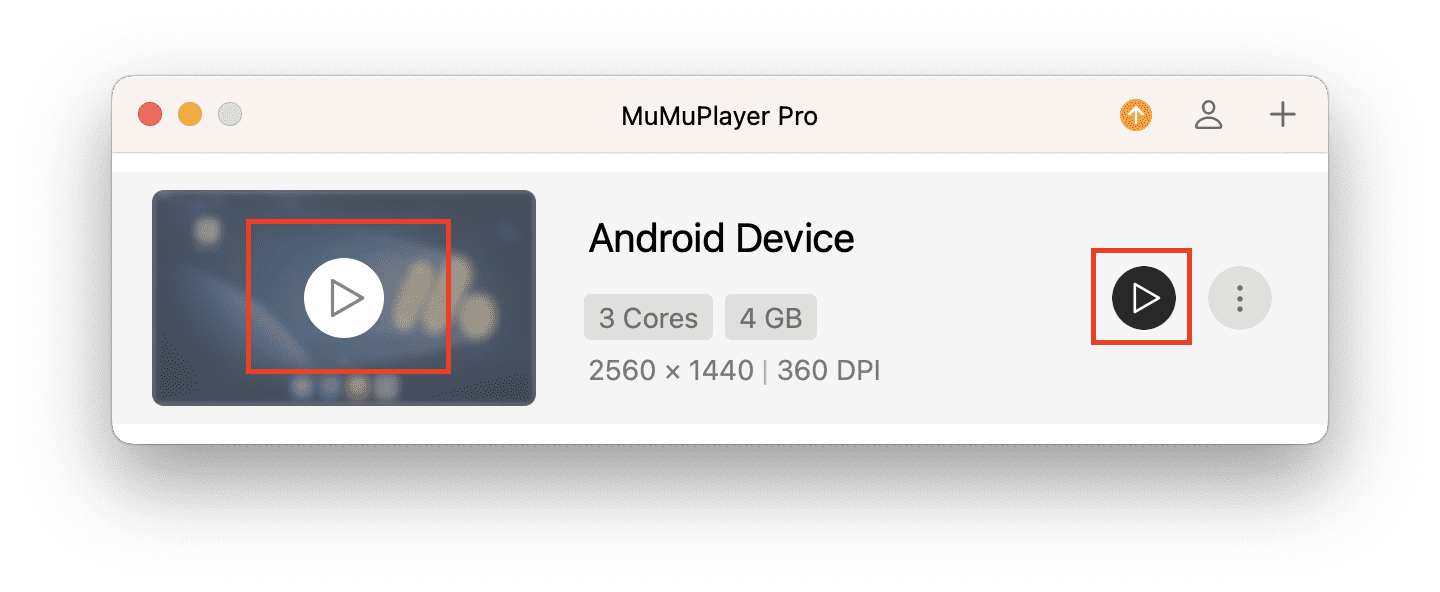
During the operation of the device, you can see that the running thumbnail changes in real time, just like a live streaming window for games!
Clicking on this small window can also bring the running Android device to the focus position, making it easy for you to quickly find the corresponding Android device.
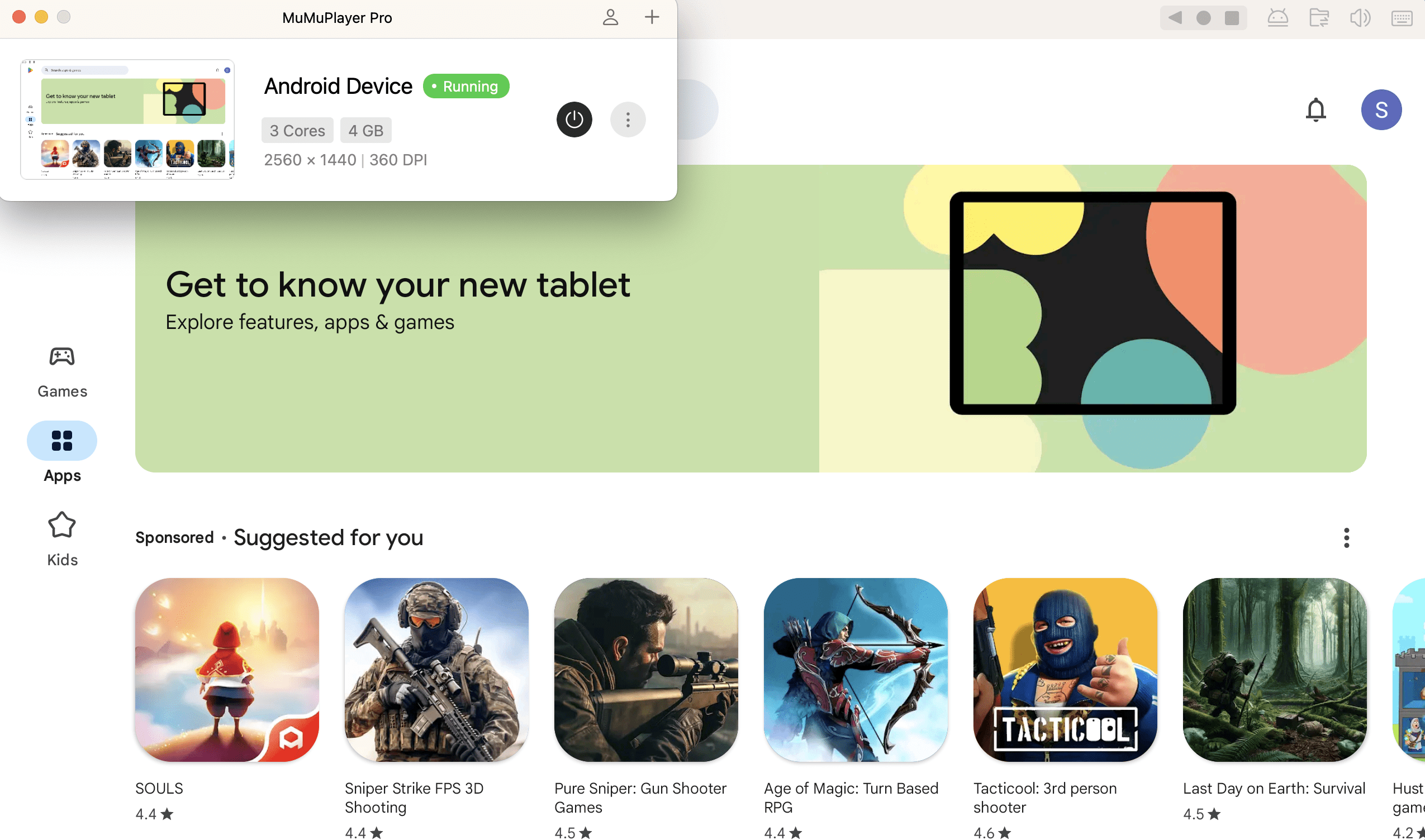
2. Modify Device Settings
After acquiring a virtual Android device, you might want to rename it. Click "Settings" to change the device name, which also updates at the device window's top for easy identification.

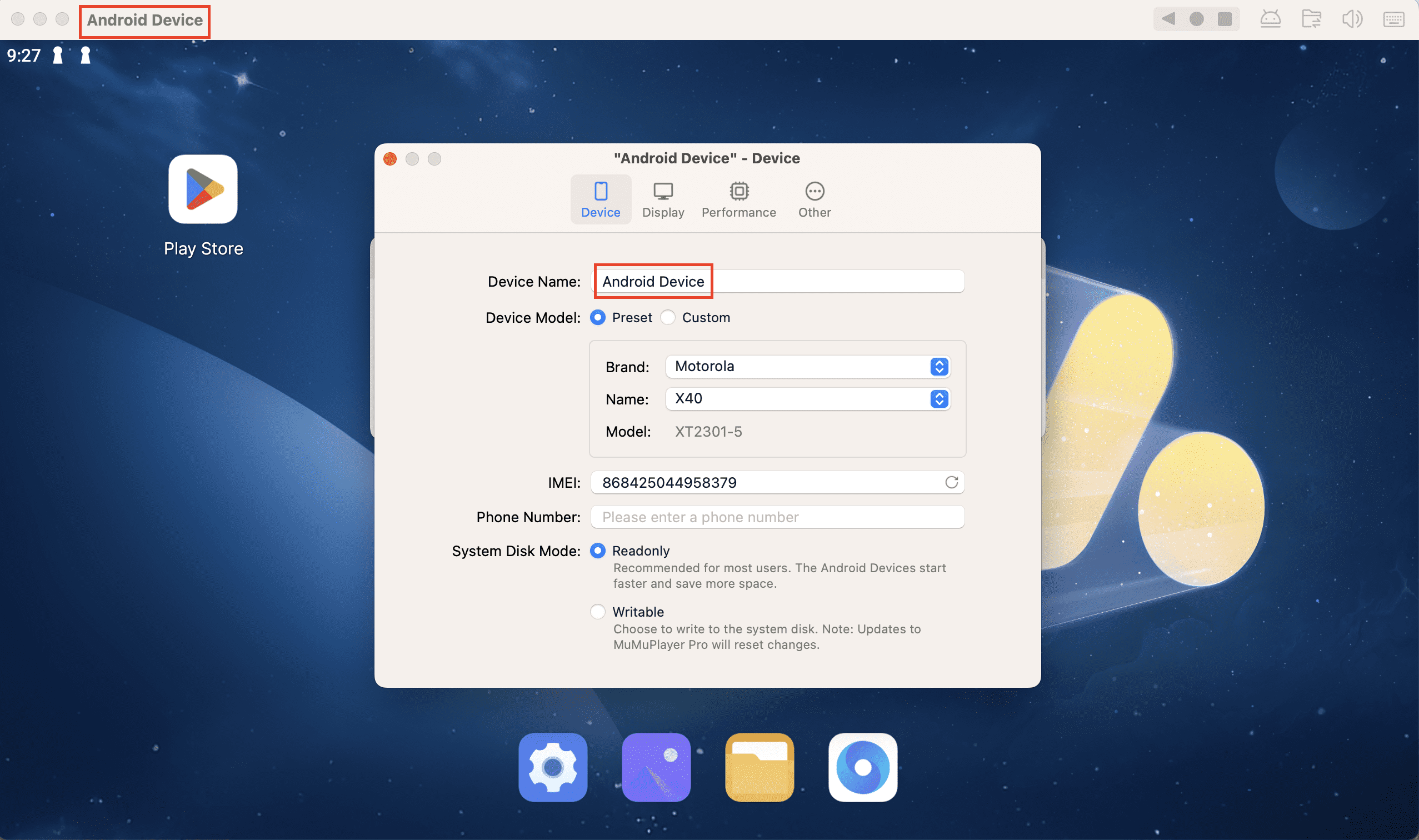
You can also modify device settings as needed, including aspects such as the device, display, performance, and more.
(1) Device
① Device Model: Some games are optimized to run better on certain phone models. In such cases, you can simulate the environment by setting the phone model. We provide some common phone models, and you can also customize the settings by clicking "Custom".
② IMEI/Phone Number: Mainly for developers simulating device requirements.
③ System Disk Mode: Choose between "Readonly" and "Writable"; the former generally ensures better performance for multi-instances.
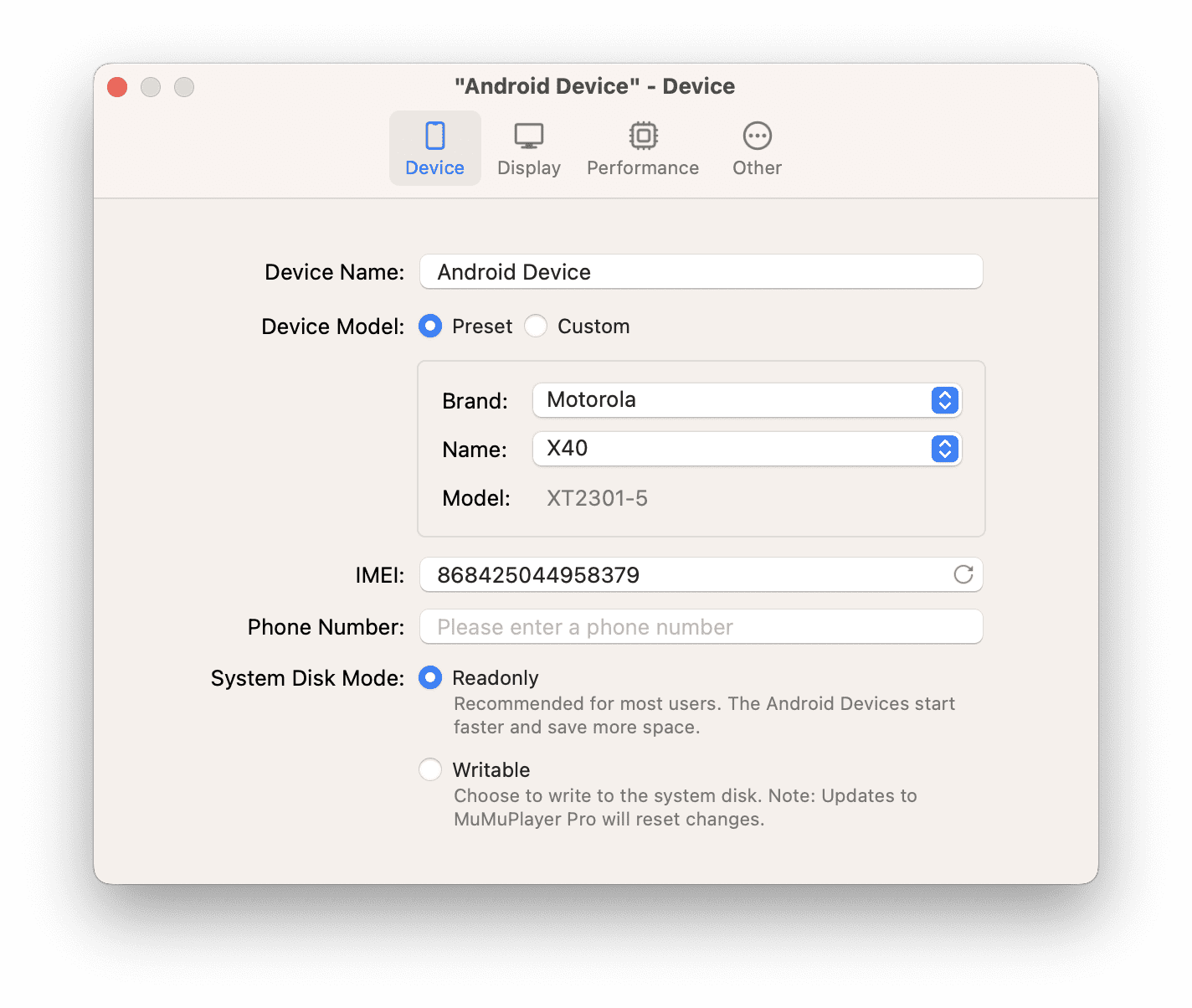
(2) Display
① Display Size: This refers to the size of the Android device, including resolution and DPI settings. We provide default resolution options for tablets and phones based on your display screen, with a 16:9 aspect ratio. You can also customize the width, height, and DPI for other resolution requirements, such as running scripts.
② FPS Counter: After enabling "FPS Counter", the current frame rate will be shown in the top right corner of the Android device window.

③ Auto Window Rotation: After enabling "Auto Window Rotation", the device window will adapt to landscape or portrait display based on the game/application orientation.
④ Graphics Enhancement: The image quality of adapted games will be significantly increased.
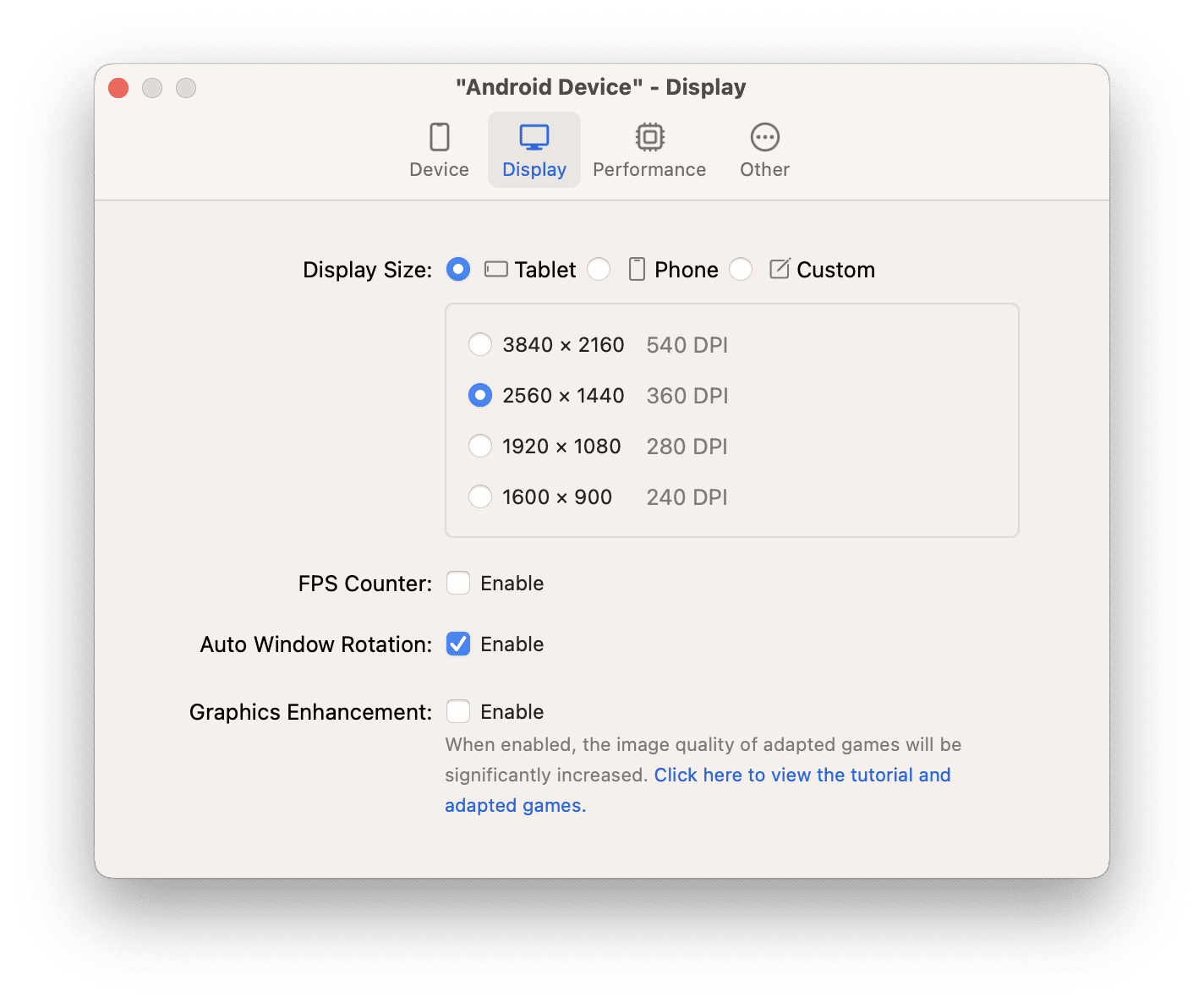
(3) Performance
① Performance Profile: This represents the computer resources allocated to the Android device. For high-performance games, select high performance or customize CPU cores and memory allocation.
② GPU Fast Math: It can reduce GPU usage but may cause display issues in high-performance demanding games.
③ Dynamic Frame Rate: It can reduce frame rate to 5/15/30 FPS when the Android window is in the background, thereby conserving resources.

(4) Other
① Boss Key: Hide all application windows instantly when needed, leaving no trace of your gaming.
② Root Access: Enable to access more apps or features on the Android device.
③ ADB: You can decide whether to use the default port or not.
④ Quit Option: When closing the Android device window using the 'X' in the top left corner, a secondary confirmation popup will appear by default to prevent accidental closure. To disable this secondary confirmation popup, you can change "Pop-up Confirmation" to "Quit Directly".
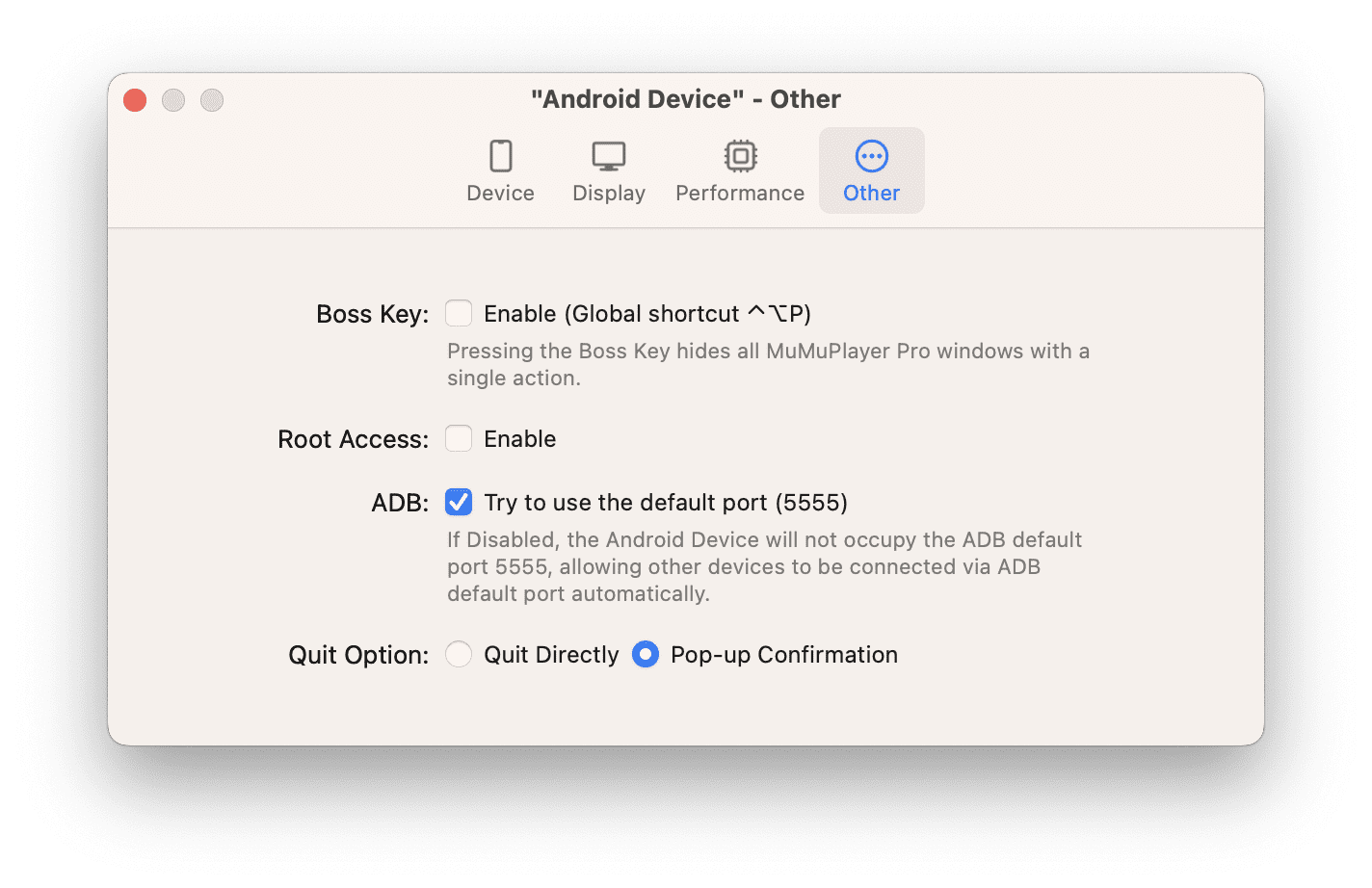
3. Copy an Android Device
To clone a device with the same settings and data, click "Clone".

4. Remove an Android Device
You can remove an unnecessary Android device and all its data by clicking "Remove".
